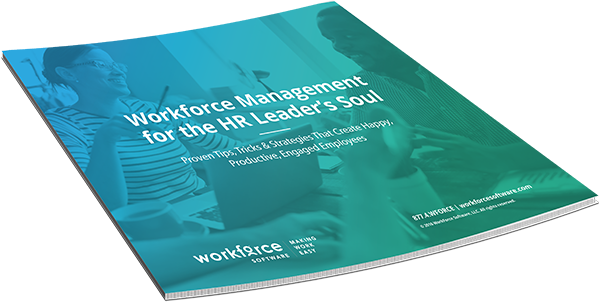Be the CEO of Your Position

“Be the CEO of your position,” said Mike Morini, speaking to hundreds of employees in Livonia, Michigan, giving a company-wide presentation that was being broadcast to hundreds more around the world.
Mike is the CEO here at WorkForce Software.
“Be the CEO of your position,” he repeated.
He means it, of course. It’s not an empty turn of phrase, not by any stretch.
“Be the CEO of your position” is a code of conduct, a WorkForce convention intended to drive innovation and action, as well as a profound sense of ownership and accountability.
Like many of my colleagues, I keep the sentiment top-of-mind. It’s written on a yellow Post-It note that hangs on my monitor, motivating me in the morning—and again when my pace inevitably slows, when it counts the most.
It doesn’t move, the note, but it moves me. It moves many of us WorkForcers, inciting not only a sense of responsibility, but possibility. After all, it’s a compelling concept, being CEO, which begs the question:
Subscribe to The WorkForce Blog
Learn the art and science of maintaining productive, happy, engaged employees.
What’s the job, really?
The CEO is responsible for the overall success of a company. He or she maps out the strategic direction, enables stability, and propels growth on a grand scale. But how?
The position demands a particular personality type, distinct attributes and characteristics.
The more familiar employees are with the way great CEOs think and behave, the more effectively they can apply those thoughts and behaviors to their own roles.
What traits do effective CEOs possess? Here’s what we know:
Being CEO: The Research
Dean Stamoulis is a consultant for Russell Reynolds Associates. He provides guidance to boards on CEO selection and succession. In an article for HBR, Stamoulis presents research his company conducted in partnership with Hogan Assessments, a personality assessment firm.
The goal was to identify leadership qualities that have a measurable impact on organizational growth.
“Other researchers have approached these questions about CEOs by conducting interviews, analyzing resumes, and even evaluating vocal patterns,” writes Stamoulis. “We chose an in-depth approach, creating detailed psychometric profiles of 200 global CEOs.”
The team used proven technical tests (e.g., 16PF; OPQ-32) to measure dozens of personality traits, validating the trends they uncovered against existing studies. Here’s what they found:
Being CEO: The Traits
According to the data, the most effective Chief Executive Officers are:
1. Intense, impatient, and eager.
“They show a greater sense of purpose and mission, and demonstrate passion and urgency,” writes Stamoulis.
According to Michael Birshan, a senior partner in McKinsey’s London office, effective CEOs are always moving forward, executing on a data-based strategy. “If you snooze, you lose,” says Birshan.
As an employee: approach your goals with the same sense of urgency. Don’t aim for perfection, it’s unnecessary. Strive, instead, to deliver, to finish things. Stagnation doesn’t drive growth. Initiative and perseverance do.
2. Big-picture thinkers.
“They value substance and going straight to the core of the issue,” writes Stamoulis.
Effective CEOs are talented at recognizing critical challenges, partly because they’re prepared, armed with competitive intelligence, context.
As an employee: understand how your role impacts the team, department, and company at large. This knowledge will set the foundation for your decision making, informing everything from the way you prioritize your time and tasks to the relationships you cultivate.
 Workforce Management for the HR Leader’s Soul
Workforce Management for the HR Leader’s Soul
This book will help you create a healthy, rewarding environment for the people that keep your company moving forward.
3. Collaborative.
“They have a greater focus on the organization, outcomes and results, and others than on themselves,” writes Stamoulis.
Effective CEOs are sponges, always absorbing facts and opinions. They’re great listeners, approachable and open-minded.
As an employee: recognize that new ideas and fresh perspectives are agents of change. So be a team player, encouraging and accessible and honest. What’s the downside?
To be the CEO of your position …
You have to constantly spur action, think big, and work well with others.
You’re not the Chief Executive, responsible for the holistic direction of an entire company. But you are at the helm of your own role, accountable for maximizing your own performance.
Adopting the traits of a best-in-class CEO will only help you excel.

 Workforce Management for the HR Leader’s Soul
Workforce Management for the HR Leader’s Soul